Road warriors: Springfield exhibit celebrates first cross-country motorcycle trip by women
| Published: 07-13-2017 3:38 PM |
A hundred years ago, there was one relatively efficient way of crossing the country: by rail.
To do it by road required using a patchwork of mostly unimproved surfaces — dirt, gravel, and sometimes just sand — on motorized vehicles that were still in their infancy and often unreliable.
But in a journey that was partly a push to advocate for greater independence for women, two sisters, riding motorcycles made in Springfield, took a 5,500-mile, coast-to-coast trip in 1916 — the first women to cross the country on motorcycles.
Augusta and Adeline Van Buren, who traced their lineage back to the days when New York was known as New Amsterdam, braved sandstorms and downpours, desert tracks and overheated engines, and small-town residents scandalized by their clothing: trousers and leather jackets, rather than dresses and corsets.
A small but lively exhibit at the Springfield Museums, “Crossing the Country to Cross Barriers,” chronicles that epic journey with period photographs, news articles and old equipment, like the leather headgear the sisters wore in the days before helmets.
It’s a trip that also inspired a re-creation of the ride last summer, when motorcyclists — including some of the sisters’ descendants — followed much of the original route, from New York to California.
“They were smart, they were good looking, they were independent, and they had played every sport imaginable,” said Robert E. Van Buren, a great-nephew of the two sisters; he learned of their adventures when he was growing up in New York City, though he never met the women.
“Nothing bothered them,” he added. “They were always up for a challenge, and no one was going to tell them they couldn’t do something.”
Article continues after...
Yesterday's Most Read Articles
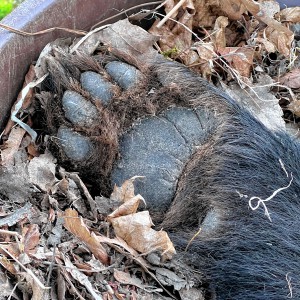 Holyoke man finds bear paw in his yard
Holyoke man finds bear paw in his yard
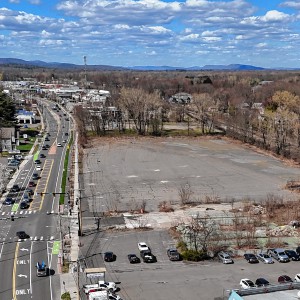 Petition to block auto dealership on King Street falters in Northampton
Petition to block auto dealership on King Street falters in Northampton
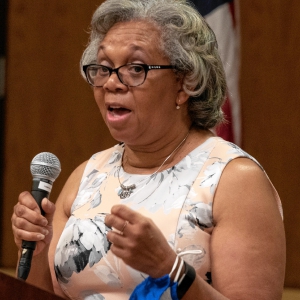 First look at how little Amherst’s police alternative being used called troubling
First look at how little Amherst’s police alternative being used called troubling
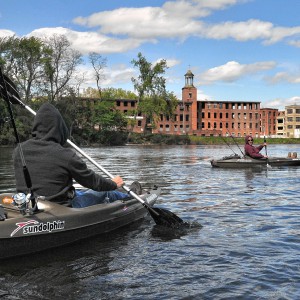 Developer lands $400K loan for affordable housing project in Easthampton mill district
Developer lands $400K loan for affordable housing project in Easthampton mill district
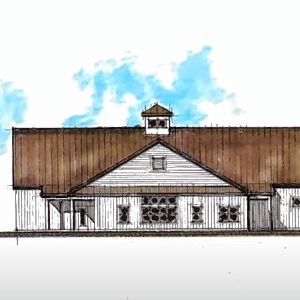 Developer pitches new commercial building on Route 9 in Hadley
Developer pitches new commercial building on Route 9 in Hadley
 Boyfriend accused in slaying of Hampden sheriff’s assistant, former legislator’s top aide
Boyfriend accused in slaying of Hampden sheriff’s assistant, former legislator’s top aide
Van Buren, who just turned 71 and lives in Northborough, east of Worcester, co-curated the Springfield show with a cousin, Dan Ruderman, of Great Barrington. Van Buren’s father, Albert, was the son of another Albert, the brother of Augusta and Adeline.
Robert Van Buren, along with his wife, Rhonda, and their daughter, Sarah, retraced his great-aunts’ route last year by motorcycle, along with close to 100 other riders; he was able to pose for photographs at some of the same locations at which Augusta and Adeline had their pictures taken, such as by a waterfall in Colorado Springs, CO.
He and his wife also did a 90th anniversary motorcycle ride, in 2006, to honor the memory of his great-aunts; Adeline died in 1949 and Augusta in 1959.
“To make that trip today is a heck of lot easier,” he said. “When they did it, the roads were terrible, and west of the Mississippi, there weren’t even any maps … they were really roughing it.”
The sisters — Augusta, a store manager, was 24, and Adeline, a schoolteacher, was 22 — were supporters of what was known as the Preparedness Movement, a push begun in 1915, after World War One had erupted the previous year, to get the U.S. ready for the possibility of going to war.
Former President Theodore Roosevelt was one of the movement’s founders, which was opposed by many workers’ groups and initially by President Woodrow Wilson, who did not want the U.S. to get tangled in Europe’s troubles.
But the Van Buren sisters saw the Preparedness Movement as a way to convince the military that women could help during wartime by, for instance, serving as dispatch riders, freeing up men for front-line service.
Robert Van Buren suggests his great-aunts also saw their cross-country trip, in a more general way, as a means for making the case for loosening societal restrictions on women.
“One of the arguments against giving women the right to vote was that they didn’t serve in the military,” he said. “Well, if they could be dispatch riders, that argument wouldn’t hold water any more.”
The sisters bought two Indian Powerplus motorcycles — the most reliable machines available at the time, says Van Buren — that were manufactured in Springfield. They left New York on July 4, 1916, motored to Springfield to visit the Indian factory, then headed west by way of roads that roughly paralleled today’s Interstate 80.
In those days, roads tended to be paved only in and around cities and major towns, Van Buren notes, leaving much of the rest of the way to be made along dirt and gravel routes, often badly rutted or muddy from heavy rains.
The sisters were also arrested several times in small Midwestern towns, evidently because some people — police, residents, perhaps both — were shocked to see them wearing pants and leather jackets and traveling without men. They were then released “with a reprimand,” according to exhibit notes.
This part of the story is a little murky, Van Buren says, as later research of court records in these towns did not show accounts of the sisters being arrested. Yet Adeline’s daughter, Anne Ruderman, told the story of the arrests over the years, he said.
“What it may have been was something more like harassment, someone not liking the way they looked and telling them to get out of town,” he said.
Among their adventures, Augusta and Adeline got lost in the desert west of Salt Lake City when they were dangerously low on water; climbed 14,115-foot Pikes Peak in Colorado on their bikes; and got so mired in mud on one road in Colorado that men from a remote mining camp had to dig them out.
They crossed California’s Sierra Nevada near Lake Tahoe and arrived in San Francisco in late August, then made it down to Los Angeles and the U.S.-Mexico border in early September, a trip of a little more than two months.
Given its unusual character, the journey was chronicled in various newspapers and magazines at the time, though some stories took a patronizing tone.
In an August 1916 account in The Denver Post, the newspaper suggested the Van Buren sisters were shirking their homemaking duties, saying the “preparedness propaganda serves large numbers of people as an excellent excuse for staying away from home — particularly the women.”
The article also said the sisters’ journey gave them an opportunity, however misguided, to challenge men in the area of “physical prowess,” as well as a chance to “display their feminine contours in nifty khaki and leather uniforms.”
But other articles celebrated their accomplishment and their toughness. In the photos at the exhibit, the sisters, like their bikes, almost always look dusty and worn — but they’ve usually got big smiles, too.
The U.S. Army rejected the idea of hiring the sisters or any other women as dispatch riders. But Van Buren says his great-aunts didn’t let that stop their push to break boundaries. Adeline later got a law degree from New York University, and Augusta became a pilot; she also taught Van Buren’s father, Albert, to fly.
Looking back on their trip, Van Buren is struck by how many people — men particularly, like the Colorado miners — helped his great-aunts on their ride.
“If two young women today tell you they’re going to travel alone, your first thought is ‘No way, that’s way too dangerous,’ ” he said.
But Augusta and Adeline “never had any problems,” he added. “Maybe that says something about the way things used to be.”
Steve Pfarrer can be reached at spfarrer@gazettenet.com.
“Crossing the Country to Cross Barriers” is on view through July 30 at the Wood Museum of Springfield History at the Springfield Museums. More information about the ride is available at vanburensisters.com, a website Robert Van Buren started in 2002.

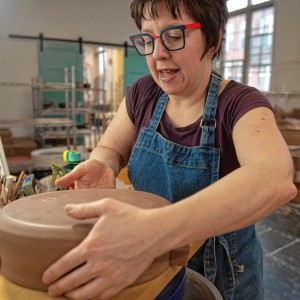 Hitting the ceramic circuit: Asparagus Valley Pottery Trail turns 20 years old, April 27-28
Hitting the ceramic circuit: Asparagus Valley Pottery Trail turns 20 years old, April 27-28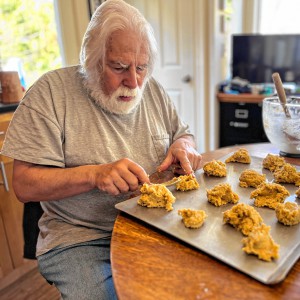 Best Bites: A familiar feast: The Passover Seder traditions and tastes my family holds dear
Best Bites: A familiar feast: The Passover Seder traditions and tastes my family holds dear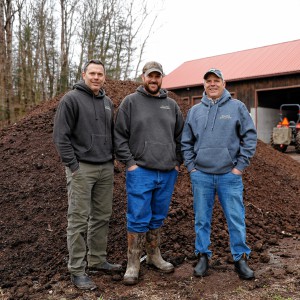 Valley Bounty: Your soil will thank you: As garden season gets underway, Whately farm provides ‘black gold’ to many
Valley Bounty: Your soil will thank you: As garden season gets underway, Whately farm provides ‘black gold’ to many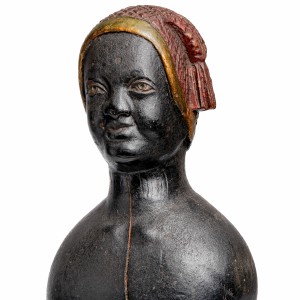 Painting a more complete picture: ‘Unnamed Figures’ highlights Black presence and absence in early American history
Painting a more complete picture: ‘Unnamed Figures’ highlights Black presence and absence in early American history
